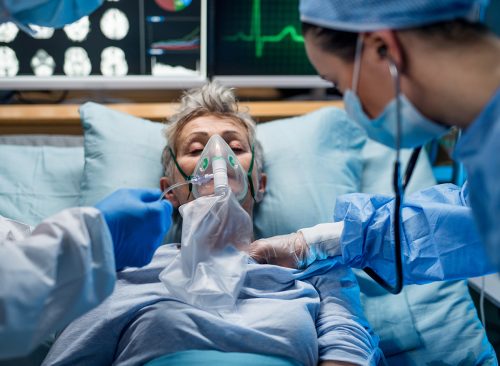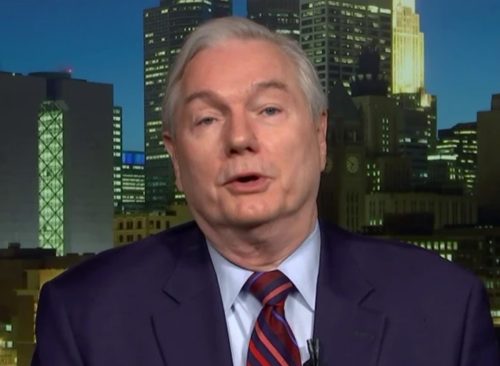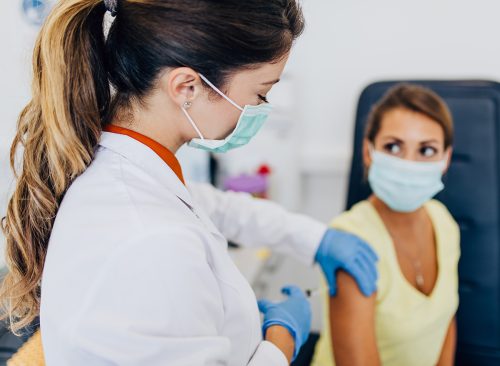Virus Expert Issues Essential COVID Update as Hospitalizations Rise
Hospitalizations are rising in some areas.

In this essential COVID-19 update, renowned virus expert Dr. Osterholm sheds light on critical aspects of the ongoing pandemic. Hospitalizations are on the rise globally, even though data tracking has waned, raising concerns about the uncertain causes. Regional disparities in the United States challenge assumptions of national trends, emphasizing the importance of context. Osterholm delves into the evolving variants, such as the highly infectious HV.1 Omicron subvariant and the potentially threatening JN.1 variant. Low uptake of updated vaccines and the significance of indoor air quality are also addressed, with a focus on evidence-based approaches. Stay informed as the COVID-19 landscape continues to evolve.

Although Osterholm bemoaned the fact that data isn’t widely available anymore due to less tracking, he does underscore the significance of hospitalization data: “From August till now, Italy has gone from less than 800 hospitalizations at an 81 time to almost 3,700.” He provides examples of countries like Canada, the Netherlands, the Czech Republic, and Sweden experiencing notable increases in hospitalizations. These increases, though lower than previous peaks, raise concerns, especially as their causes remain uncertain.

The expert highlights regional variations in COVID-19 trends within the United States, cautioning against assuming uniform national trends: “Although new hospital admissions have declined 12% over the past two weeks in the United States, 13 states actually saw an increase in daily hospitalizations.” He emphasizes the need to consider the scale of relative increases in the context of the lower baseline compared to earlier stages of the pandemic.

In discussing state-level increases, Osterholm provides perspective: “But I hope this helps put into perspective for our listeners that even when we discuss regional or state level increases in COVID-19 activity, this is still nothing like what we were seeing during the regional surges back in 2020 and 2021.” He underscores that current relative increases are not comparable to the severity of previous surges.

Dr. Osterholm discussed the HV.1 Omicron subvariant and the JN.1 variant, both originating from XBB.1.5 Omicron. He notes that the HV.1 variant has surpassed the previously dominant EG.5, with CDC models predicting this shift will continue. Osterholm explains that HV.1, similar to EG.5, has an advantage due to a mutation that enhances its ability to bind to human cells, making it more infectious. He expresses concern about advantageous mutations and the uncertainty surrounding the impact of the divergent HV.1 variant on COVID trends.
Osterholm reveals his approach to handling variants, emphasizing caution and vigilance: “I, as a matter of approaching variants, have always assumed all variants are innocent till proven guilty.” He acknowledges the tendency for predictions about new variants potentially causing severe outbreaks and highlights the need to stay attentive to emerging variants.

The discussion shifts to the JN.1 variant, described as an offshoot of BA.2.86. Osterholm characterizes JN.1 as a highly mutated variant with notable differences from Omicron. He raises concerns about its potential to become a significant threat, especially if case numbers rise before the winter holidays. He also mentions the importance of considering waning immunity and its long-term effects.

There has been low uptake of the updated COVID-19 vaccine. Osterholm responds by citing CDC findings and expressing his deep worry about the low coverage among different age groups, particularly children and older adults. He urges eligible individuals, especially those at higher risk, to promptly receive the updated vaccine to avoid unnecessary and potentially life-threatening situations.

Dr. Osterholm stresses the significance of indoor air quality in mitigating the spread of COVID-19 and other respiratory infections. He discusses the recent 60 Minutes report on this topic and its implications. Osterholm raises concerns about the claims made in the report, particularly the lack of concrete evidence supporting specific measures to reduce the risk of airborne virus transmission indoors. He highlights the need for caution and evidence-based recommendations.
“One of the problems we have today is that we really are lacking in good evidence as to what we need to do in the air to reduce the risk of transmission, particularly airborne viruses with aerosols.”
RELATED: 90% of People Who Die From COVID Have This in Common

Addressing misconceptions, Osterholm points out that simply increasing the number of air exchanges per hour does not guarantee protection against airborne pathogens. He uses examples from healthcare settings to emphasize the complexity of airborne transmission. “There is not a single lick of data from anyone that supports that to be true, and in part it’s because guidelines for new airborne infection isolation rooms…require 12 air changes per hour, yet healthcare workers must wear a respirator.”
Osterholm highlights the complexity of airborne transmission, citing instances of outbreaks in call centers and crowded outdoor settings. He emphasizes that increased airflow and significant investments in air circulation improvements do not ensure complete prevention of disease transmission.
While Osterholm strongly supports improving indoor air quality, including using MERV filters, he refrains from making sweeping promises about specific measures. He underscores the importance of informed decision-making and ongoing research to better understand effective strategies for reducing airborne pathogen transmission indoors. “I hope that people do understand indoor air is very important…but you’re never going to hear me promise to someone. You get five air exchanges, you use Merv filters, you’re going to not have to worry about it. That’s just the data.”














